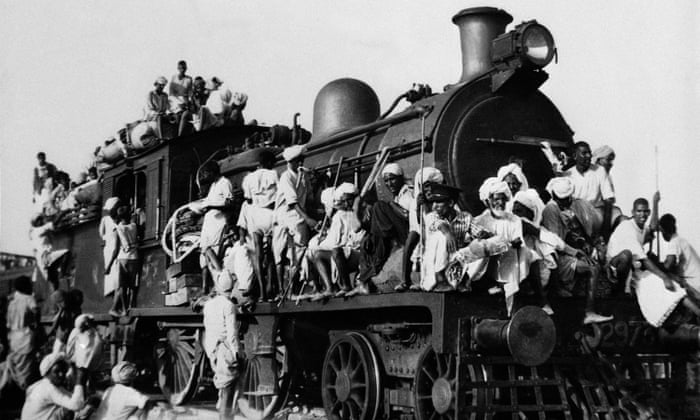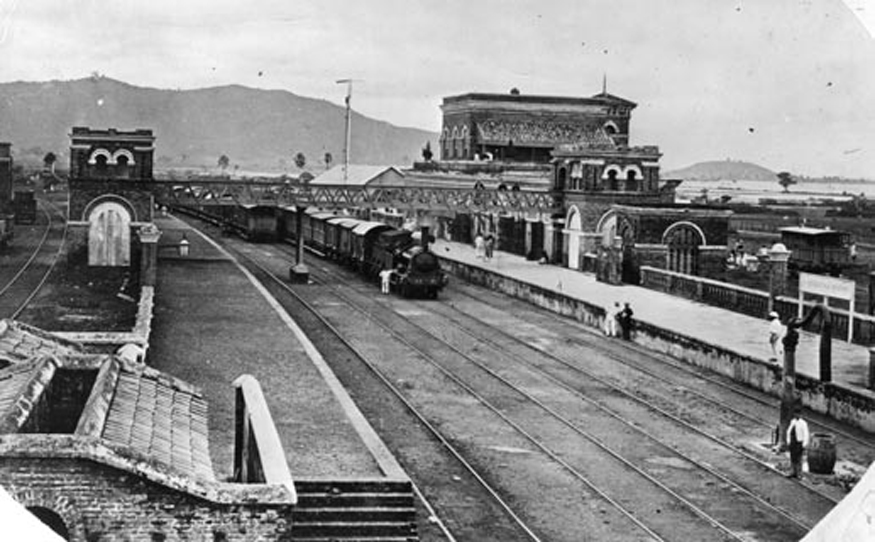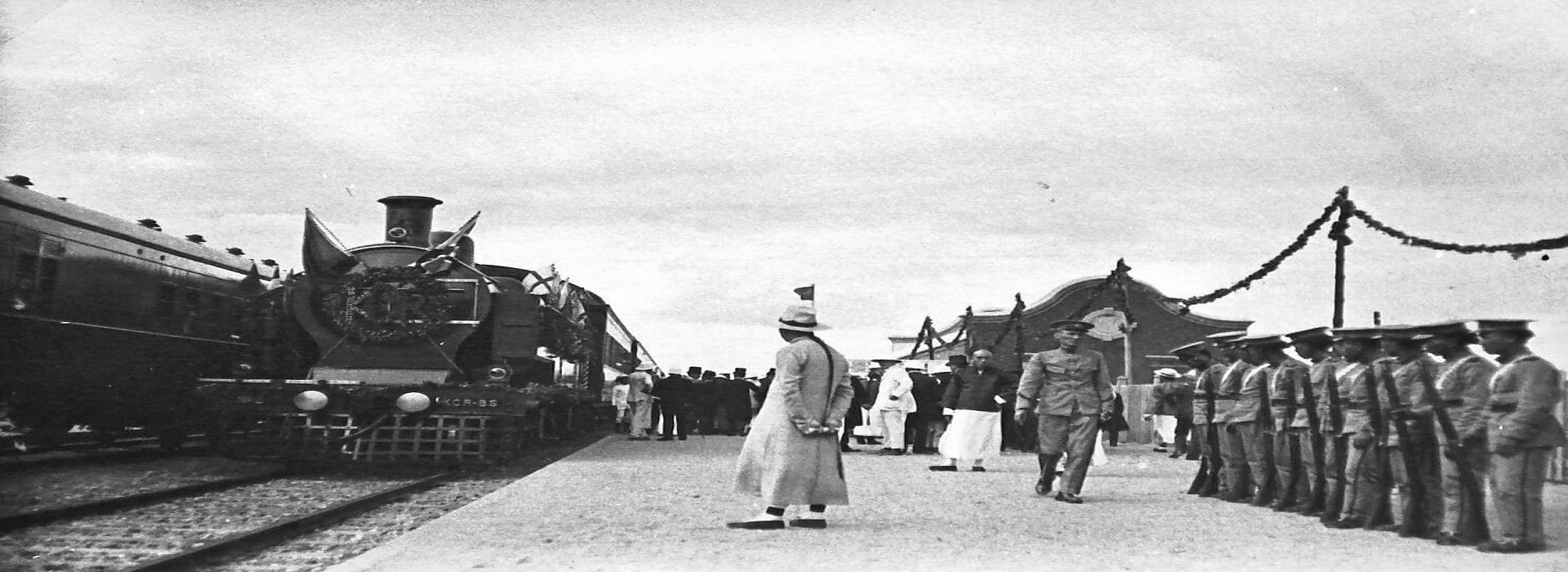Reading and traveling have been the inherent nature of the mankind. About the quality of reading, Bacon has aptly quoted in his treatise’ Of Studies’-‘’Reading market a full man and writing an exact man ‘’. Similarly about traveling Mark Twain avers- ‘’travel is fatal to prejudice, bigotry, and narrow mindedness’’. Travelling is being done using various modes and the railway journey has played a vital role in this sphere since time immemorial.

Rail transport or railway journey is a very popular and useful means of transporting the passengers or goods by using the wagons running on the rail tracks. The human civilization has always been in the constant process of evolution and invention for the ease of life. The modern railways we see are the result of perpetual toil and innovation. It has witnessed great upheavals and tremors like World War1 and 2, the holocaust of the Jews by the Nazis, Indo Pak partition, etc. Simultaneously it also shares some pleasure moments like becoming a host to the luxury train tourists and giving them a feel of the regality or playing the role of mobile hospitals during the recent pandemic of COVID -19.
Credit to the steam engine in Railway Journey
The modern system of the railway journey is the outcome of the steam engine. The fuming steam engine is the child of George Stephenson. Imagine the efforts and planning of duo Stephensons-George and Robert, father, and son in their start-up of steam engine workshop. Just think of the day when George made his first locomotive ready named Blucher which was used for hauling up coal. George and Robert named their first steam engine as Locomotion no1 which created history as it was the first to transport the passengers on a rail line in 1825.

What are the oldest evidences of the railways?
The oldest evidence of the railways we can trace back from the Diolkos close to Corinth in Greece which almost date back to 6 th century B.C. Besides this similar stances, we can find of such apparatus from the cave paintings of the Paleolithic era which give a vague idea of the object like a train, having no sound basis. They are more considered imaginary. Later during the Elizabethan era, we get the references of these kinds of rail transport in Germania in the form of horse operated funiculars. The regular rail service can be conceived only with the opening of the Liverpool and Manchester Railway which was started in 1830 by George Stephenson.

What was Diolkos?
For a better understanding of the development of the railways, one has to go deep into the history of old Greece.In a way it was instrumental and a first step for the modern railways. Very close to the modern Corinth Canal in Greece, this Diolkos ran straight. It was about 6 meters wide paved way made of limestone

How did Diolkos work? The first step of Railway Journey
The ships were loaded on a wheeled platform bay using the animal and manpower Just to lessen the weight of the ship the cargo was first unloaded so that it can easily go on top of the Diolkos. The unloaded stuff was carried separately and then the ship was lowered into the sea and cargo was reloaded into it. Besides trade and commerce, Diolkos played a pivotal role in warfare times. Thus it had great strategic importance. This remained in constant use up to 1st century A.D. and then disappeared for which there is no historical record. Most probably it is believed that when The great ruler Nero plunged digging a canal it suffered major damage and finally came to an end.
How the railway tracks were laid in olden age?
What we see presented as a railway track has been the result of constant research and rigorous work. Nowadays we see the steel rails are set at a fixed distance and are connected with the wooden or concrete sleepers. These are set into the loose gravel. These stone pebbles keep these sleepers in the appropriate place Normally these railway tracks are laid at some height from the ground level to avoid the possibility of damage during the inundation of water in flooding.

Imagine in the early 16 century in Austria they used wooden tracks and a hemp hauling rope This was operated by human and animal power. This is known as Reisszug and is at Hohensalzburg castle in Austria. This can be termed as the oldest railways. In the later sixteenth century in England also the wooden rails were introduced for the horse-driven trams. These are the precursor to the modern rail lines. This rail line was made by Philip Layton in 1594 and carried coal from a mile.
Was the Industrial Revolution possible without Railways?
The advent of the industrial revolution changed the whole scenario of human civilization. Now with the development of the railways the industries were benefited as the goods were easily transported in bulk with less effort, time and expense. It also curtailed the cost of manufacturing as the raw materials were also transported easily .On the other hand it also provided the ease of labor as the large number of migration of labour started from the rural parts to the urban areas only with the facility of the railways, which was unimaginable beforehand.
In almost all heavy industries there was the increasing demand of coal and iron ore and this was easily supplied by the railway wagons. Thus the railways not only helped in the development of England or other European countries as a whole, but it also made a drastic change in the living standards of innumerable citizens of USA.It was the end of 19th century when USA and other western countries were claiming to be developed countries with a large infrasctural development such as the speedy highways and rail transport. This mode of rail transport facilitated the masses with the need of fuel, food and other materials. Railways proved to be the lifeline connecting the cities.
Read More Here:-
Which is the oldest steam locomotive?
The oldest surviving steam locomotive of the world is Puffing Billy which was made in 1813 in England .It was made by William Hedley and some of his other friends . It was made for Christopher Blackett who was the owner of Wylarn Colliery. This locomotive remained in constant use up to 1862 and was later sold to the museum. The other locomotive similar to Puffing Billy known as Wylam Dilly is at National Museum of Scotland.
8 Interesting Facts About the First Railway of the World
1—The first train of Stephenson ran on the Liverpool Manchester Railway track on September 15, 1830.
2—This was the first train that was driven by the steam engine as earlier trains were hauled by either animal or manpower.
3—This train had the power to run 30 miles per hour and used to carry cotton from Liverpool to the mills of Manchester.
4—It used to have a gauge of 4 feet 8.5 inches.
5—This project was envisaged by Stephenson on the behest of Sandars and some other traders who appointed Stephenson to make a railway which can lower the transportation cost of raw materials and the finished products by linking Manchester and Liverpool, the two prominent cities of Lankashire . Manchester was famous for factories while Liverpool was a major port city.
6—On the eve of the opening of the first railway line a competition was held in which 8 locomotives were used in the race which were all built in Newcastle Works of Stephenson . Among these Stephenson’s new engine named Rocket became victorious and it attained the speed of 36 miles per hour.
7—Liverpool Road railway station built in 1830 is one of the few old surviving railway stations in the world.
8—Spa road railway which was opened in 1836 in London was the world’s first elevated station.
Suggested Tour Packages–
- Delhi to Agra by Train
- Taj Mahal Tour by Gatimaan Express
- Same Day Agra Tour by Train
- Agra Tour by Gatimaan Train 1 Day Tour
- Delhi Jaipur Agra Tour by Train
- Golden Triangle Tour with Khajuraho and Varanasi
Who is considered as the father of American Railway?
John Stevens can rightly be called as the father of American railways as he first of all experimented in this field. In the year 1823, three years before George Stephenson’s experiment , he demonstrated the possibility of steam locomotion. He did it in his estate In Hoboken on a circular track. In America the early railway surveys and construction activities were all done by private investors.
In 1830 following the British path the Batimore and Ohio Railways became the common carrriers using the horses to drag the wagons.
What is the first Subway of the World?
London Underground is the World’s first underground railway system and it was initiated in 1863. It bears its nickname as the Tube and serves as the rapid transport system to the travelers not only of London but also nearby parts of United Kingdom such as Buckingham and Essex . Presently this service is operated by London Underground Ltd and this is a subsidiary of Transport For London(TFL).
For construction testing purpose a short tunnel was made in 1855 at Kibblesworth town which had almost same soil and other properties like that of London.
Presently the Undergound is divided into 9 zones and 11 tube lines. The services of Tube are available from 5 am. Until midnight. Zone 1 of the Tube is for Central London and 6 to 9 zones are for the outskirts.
Unique facts about the first Indian railway Journey
The first Indian railway was built by the Great Indian Peninsular Railway fro Bori Bundar railway station in Mumbai to Thane on 16 April 1853. Bori Bundder railway station was later renamed after Queen Victoria as Victoria Terminus and presently it is called as Chatrapati Shivaji Terminus. This was the first Indian train journey in India which covered 34 km route and took 57 minutes The Great Indian Peninsular Railway is presently known as Central railway.
The board of Directors of the East India Company appointed John Burkeley as the chief project engineer .For pulling the first Indian train three locomotives were used -SSS- Sindh ,Sahib and Sultan . Thus these colossal steam engines hauled the 14 carriages carrying 400 passengers with a note of 21 gun salute. The Indian railway is proud of 167 years of heritage.
Beside the operation of this train Sir Arthur Cotton previously managed to built a goods train in which he transported granite stone in 1837. This ran from Red Hills to Chintadripat Bridge.
Royapuram Railway station built on the Chennai beach is one of the oldest surviving railway stations of Indian railway . The first train of South India started from this station in 1856 ad.This station also has the credit of becoming the headquarters of Madras and Maharatta railway up to 1922. Later the headquarters were shifted to Egmore.


2 comments
[…] Read More Related Blog:- History and facts of Railway Journey […]
[…] History & Facts of Railway Journey […]